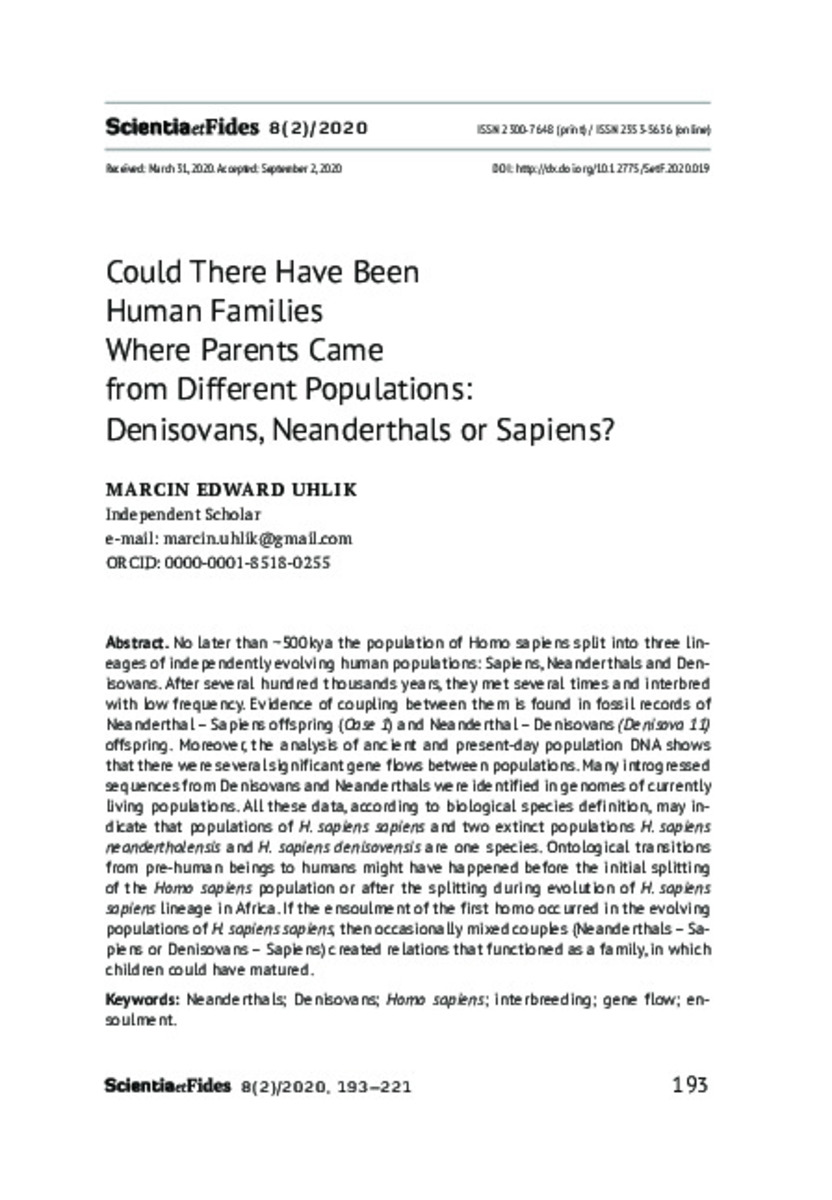Could There Have Been Human Families Where Parents Came from Different Populations: Denisovans, Neanderthals or Sapiens?
Keywords:
Neanderthals
Denisovans
Homo sapiens
interbreeding
gene flow
ensoulment
Publisher:
Uniwersytet Mikołaja Kopernika
Citation:
Uhlik, M.E. (Marcin Edward). "Could There Have Been Human Families Where Parents Came from Different Populations: Denisovans, Neanderthals or Sapiens?". Scientia et Fides. 8 (2), 2020, 193 - 221
Statistics and impact
0 citas en

0 citas en

Items in Dadun are protected by copyright, with all rights reserved, unless otherwise indicated.








